Introduction – Indoor Plants for Clean Air
We aim to convert your living spaces into havens of health and beauty. Hello, and thank you for visiting Homengardenideas. Our investigation today focuses on not ordinary indoor plants for clean air, but those renowned for their air-purifying properties, are the subject of our investigation today. Adding indoor plants for clean air that promote clean air into your décor is not only a visual delight but also a health necessity in light of rising concerns about indoor air pollution.
Emitted by furniture, upholstery, construction materials, and cleaning products, indoor air pollutants comprise volatile organic compounds (VOCs) such as benzene, formaldehyde, and trichloroethylene, which are prevalent in contemporary residences. Nature graciously provides us with indoor plants for clean air, a lovely and effective alternative. The subsequent enumeration comprises the ten most exceptional indoor plants for clean air that not only enhance the aesthetic appeal of your environment but also purify the air you inhale. We have carefully selected indoor plants for clean air for this list.
Spider Plant (Chlorophytum comosum)
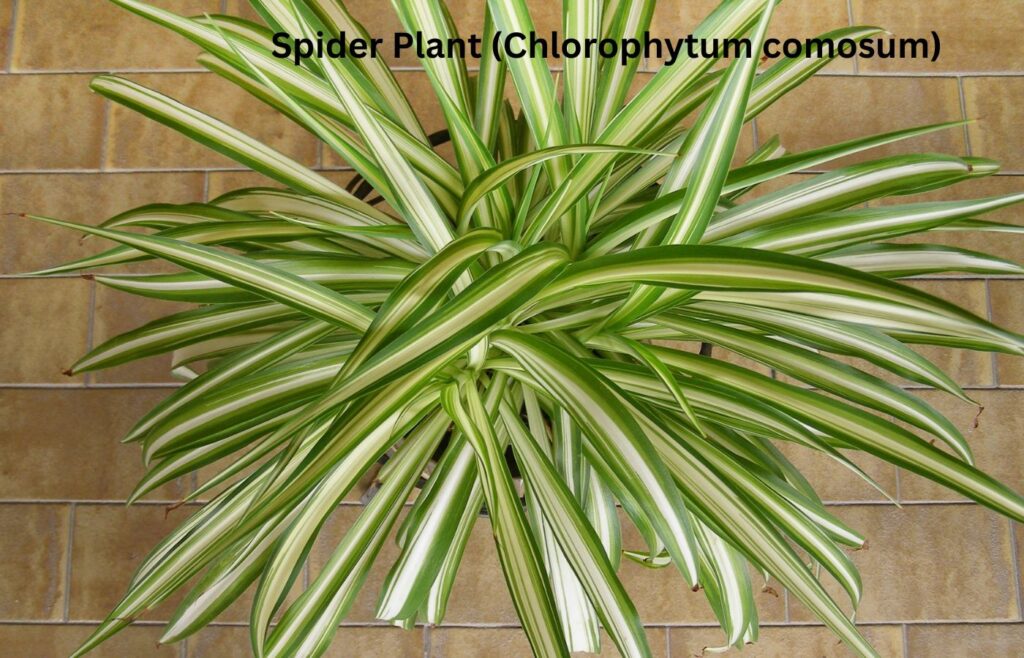
Chlorophytum comosum, commonly referred to as the Spider Plant, is a well-liked houseplant that is recognized for its resilience and capacity to purify the air. Spider Plant is not only aesthetically pleasing but also among the most effective indoor plants for clean air. It stands out with its long, arching, white-striped foliage. It is an outstanding option for improving indoor air quality due to its exceptional capability of eliminating contaminants from the environment, including carbon monoxide, xylene, and formaldehyde.
Splendid in a diverse array of environments, spider plants require minimal maintenance. Adaptable to reduced light levels, they are compatible with a variety of indoor environments, despite their preference for indirect, bright sunlight. Their soil requires consistent moisture throughout the growing season but can tolerate intermittent periods of dehydration. For them, watering is a simple process.
The parent plant suspends “pups,” or small plantlets, from its slender stems, creating a cascading effect. This is one of the most endearing characteristics of the Spider plant. Not only are Spider Plants aesthetically pleasing, but they also serve as a perfect gift for friends and family who want to improve the air quality in their homes, due to their easy propagation through soil or water drainage. Whether showcased in suspended containers or elevated plant stands, Spider Plants enhance the aesthetic appeal of any area.
Snake Plant (Sansevieria trifasciata)
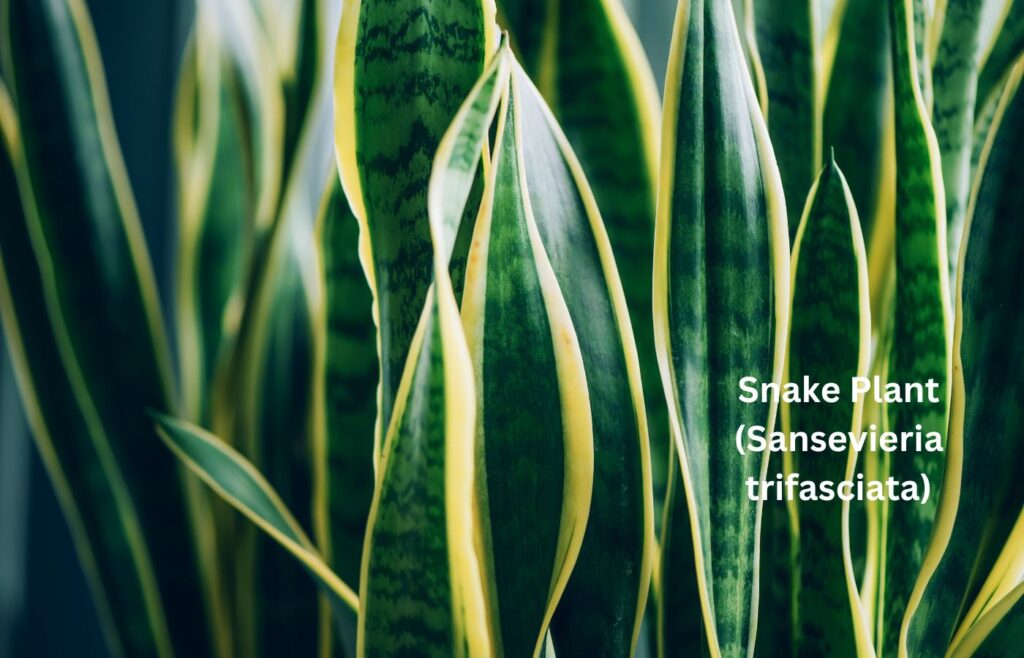
The Sansevieria trifasciata Snake Plant is widely esteemed for its exceptional resilience and distinctive visual appeal. The Snake Plant, distinguished by its sword-shaped foliage that transitions between green and yellow margins, is not only an eye-catching feature that enhances interior design but also ranks among the most efficacious indoor plants for air purification. It is renowned that this robust plant can filter pollutants including formaldehyde, benzene, xylene, trichloroethylene, and toluene.
Its capacity to generate oxygen during the night is one of the Snake Plant’s most distinguishing characteristics, which makes it an ideal bedroom accent for promoting restful sleep. Extremely drought-tolerant, only watering is necessary when the soil is utterly desiccated. This feature renders it an ideal selection for individuals who frequently neglect to water their plants as well as novices.
While they can tolerate a variety of illumination conditions, including direct sunlight and low light, snake plants prefer indirect light. With its strong air-purifying properties and low maintenance needs, the Snake Plant is an excellent option for both offices and residences, as it offers both aesthetic and health benefits. Its remarkable appearance and adaptability have contributed to its widespread use in interior design and healthy living environments and is one of the indoor plants for clean air.
Peace Lily (Spathiphyllum)

Due to its sophisticated aesthetic and exceptional capacity for air purification, the Peace Lily, which is formally classified as Spathiphyllum, is a very popular choice among indoor plants for clean air. The Peace Lily is a beautiful indoor plant that exudes sophistication and serenity through its glossy, dark green foliage and eye-catching white blossoms. Exceptionally proficient at eliminating detrimental air pollutants including benzene, formaldehyde, trichloroethylene, ammonia, and xylene, this plant is an outstanding addition to initiatives promoting the cleanliness of indoor spaces.
Peace Lilies are ideal for both inexperienced and seasoned plant proprietors due to their low maintenance requirements. They flourish in environments with low to moderate light and a preference for humidity, which makes them ideal for moist environments such as bathrooms or kitchens. A visible sign that the plant is parched is that it will droop, which serves as an effective reminder that watering is required only when the soil becomes dry to the touch.
The ability of the Peace Lily to increase indoor humidity, which is advantageous for respiratory and skin health, is in addition to its air-purifying properties. Low-maintenance care renders it a practical option for busy individuals in search of a natural, decorative element for their residences, while the ability to bloom indoors contributes a revitalizing aesthetic allure.
Boston Fern (Nephrolepis exaltata)
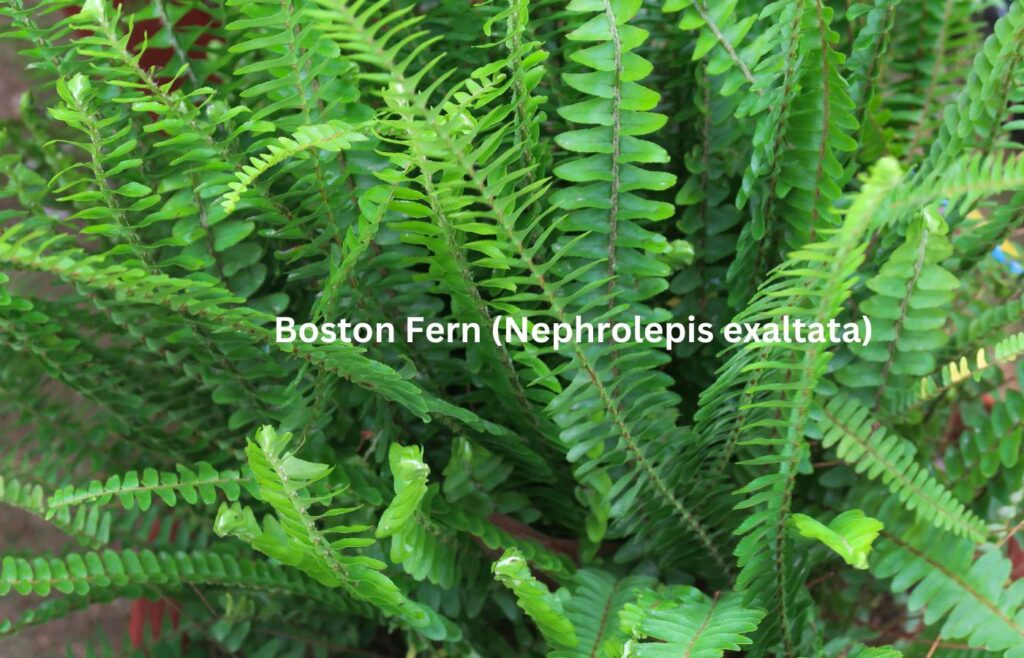
Since the Victorian era, the Boston Fern, scientifically known as Nephrolepis exaltata, has adorned residences as a lush and enduring houseplant. Alongside its graceful, arching green fronds, its demonstrated air-purifying properties also contribute to its widespread appeal. Exceptionally effective at eliminating noxious indoor air contaminants like formaldehyde and xylene, this plant is an excellent addition to any indoor environment.
Boston Ferns prefer indirect light and flourish in moist environments; therefore, they are well-suited for kitchens and bathrooms, where moisture levels are higher. However, if consistently moistened, they are also adaptable to environments with lower relative humidity. Ensuring that the soil remains moist but not waterlogged and shielding the plant from direct sunlight, which can scorch its delicate fronds, are critical components of Boston Fern care.
Boston Ferns are recognized not only for their air-purifying properties but also for their capacity to imbue any environment with an aura of sophistication and a serene verdant presence. Whether exhibited suspended from a shelf or displayed in a hanging container, the gracefully swaying fronds of these plants produce a visually captivating effect. Additionally, Boston Ferns are non-toxic, rendering them suitable for households that include pets and children.
In its entirety, the Boston Fern transcends its ornamental status and serves as a practical component of residential environments, augmenting interior air quality while beautifying each space. Due to its health benefits and low maintenance requirements, it is an absolute necessity for both plant enthusiasts and health-conscious individuals.
Bamboo Palm (Chamaedorea seifrizii)
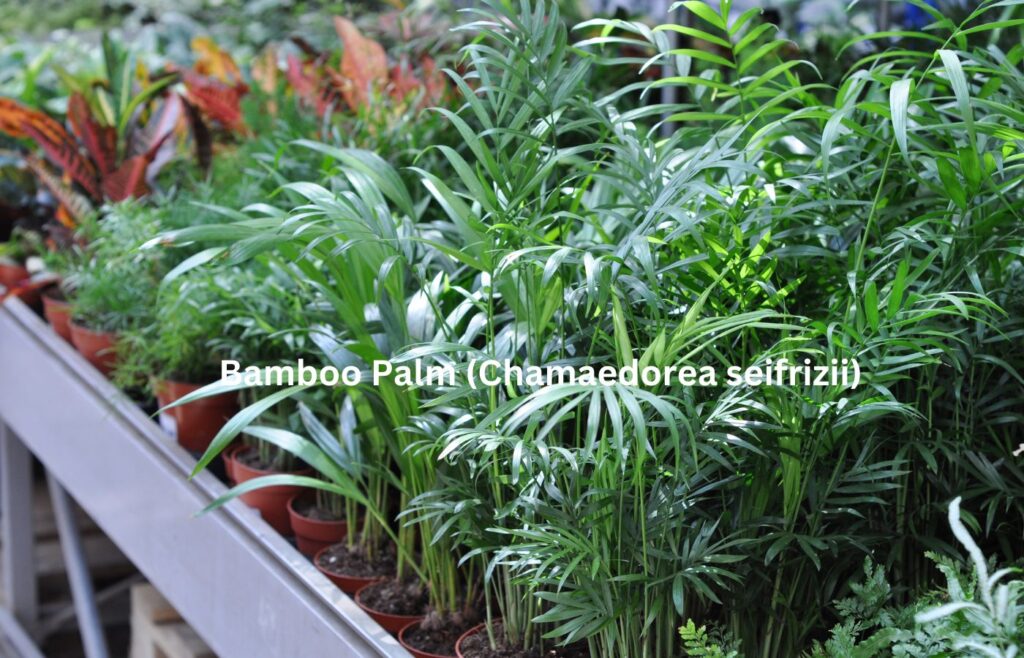
The Bamboo Palm, identified by its scientific name Chamaedorea seifrizii, is an aesthetically pleasing and graceful houseplant that infuses a domestic setting with a tropical ambiance. Distinguished for its exceptional air-purifying capabilities, the Bamboo Palm effectively filters out prevalent domestic air pollutants such as benzene, formaldehyde, and trichloroethylene, which are byproducts of contemporary building materials and furnishings.
The Bamboo Palm enhances indoor air quality and imparts an air of sophistication and exoticism with its feathery fronds and slender shafts resembling bamboo. Due to its propensity for flourishing in low-light environments, this palm is an exceptional selection for interior rooms and offices that receive little natural light.
Maintaining a bamboo palm requires minimal effort. It requires consistent sprinkling to maintain the ideal humidity levels, which it finds in moist, well-drained soil. However, extreme irrigation should be avoided at all costs, as it can cause root rot. Additionally, its insect resistance is moderate, which renders it a resilient option for both inexperienced and seasoned plant proprietors.
In addition to its visual appeal, the Bamboo Palm also offers health benefits, which contributes to its widespread use as an indoor accent without demanding significant upkeep. It is a valuable asset to any home or office due to its capacity to enhance air quality and impart a tropical aesthetic.
Rubber Plant (Ficus elastic)
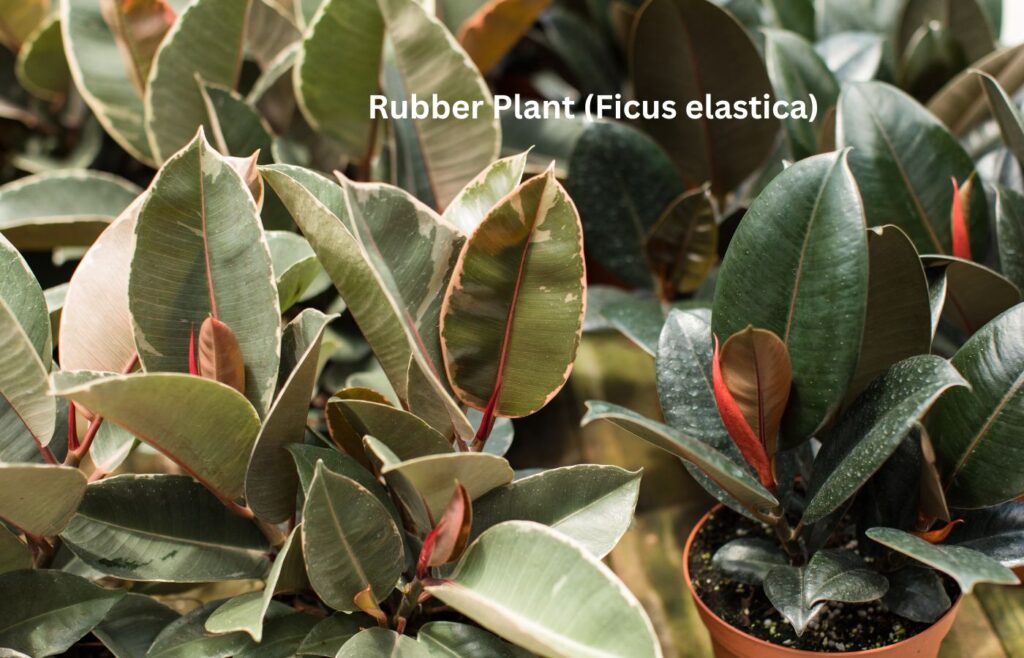
Rubber Plant, scientifically referred to as Ficus elastica, is a resilient and eye-catching houseplant distinguished by its substantial stature and lustrous, dark green foliage. In addition to being a striking aesthetic addition to any indoor environment, it also serves a vital function in enhancing air quality. Particularly proficient at eliminating airborne pollutants such as formaldehyde, which are frequently released from furniture and indoor finishes, the Rubber Plant is an outstanding option for promoting a healthier living environment.
The Rubber Plant, which is indigenous to the tropical regions of Southeast Asia, flourishes in conditions that closely resemble its natural habitat. It would do well in indirect, bright light and requires moderate watering; between waterings, the soil should be permitted to dry out. Although its growth may be slowed, this plant is exceptionally stubborn and can tolerate low light levels.
The ease of maintaining a Rubber Plant renders it appropriate for individuals with varying levels of experience as plant enthusiasts. Consistent maintenance of its glossy appearance and efficient photosynthesis is achieved through routine cleaning of its sizable foliage.
It is possible for the Rubber Plant to attain heights of several feet, which enables it to dominate expansive interior environments and allow its verdant foliage to flourish. As a result, in addition to its air-purifying attributes, the Rubber Plant is a practical and well-liked addition to any residence or workplace.
Aloe Vera
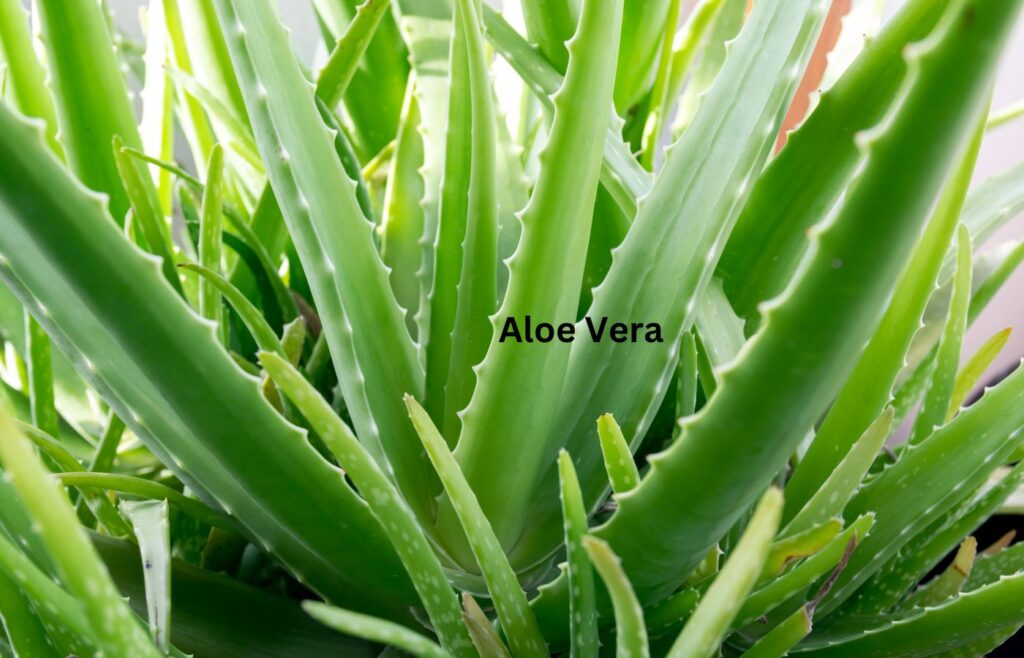
Aloe Vera, whose formal name is Aloe barbadensis miller, is a succulent plant that has been used for thousands of years to heal, look good, and keep you healthy. The plant is identified by its thick, spiky leaves that contain a gel-like material that is known to help with pain, healing, and inflammation. People often use this cream to treat skin problems like burns, sunburns, and small cuts.
People also love aloe vera because it cleans the air, which makes it a great choice for indoor spaces. Toxins that are commonly found in homes are removed from the air, which makes the area healthier to live in. The plant is easy to take care of because it only needs a little water and some light. This makes it perfect for growing indoors.
Aloe Vera is useful in many situations, but it is also used in many beauty and health goods, like shampoos, lotions, and dietary supplements. People think it has antibacterial and antioxidant benefits that can help skin stay healthy and heal. The plant’s ability to moisturize is especially good for people with dry or sensitive skin.
Aloe Vera can be put on the skin, but it can also be drunk as a juice, which is said to help digestion and improve general health. But you should be careful because the juice can also make you go to the bathroom and mix badly with some medicines. Before starting a new dietary product, you should always talk to your doctor, especially if you already have a health problem or are taking other medicines.
English Ivy (Hedera helix)

The Hedera helix plant, also known as English Ivy, is strong and flexible, and it can do well in a range of situations, from shade to full sun. People love this evergreen plant for both its looks as a lush groundcover or an elegant climber and for its useful functions in cleaning the air and stopping erosion.
There are two different types of this plant: the juvenile type has leaves with lobes and can climb using aerial rootlets, and the adult type has leaves without lobes and flowers and berries. English ivy is very flexible, which makes it great for hiding ugly walls, fences, and yard structures. It can also be used as a hanging plant to add greenery to rooms inside.
English ivy is known for its ability to filter out indoor pollutants like benzene, formaldehyde, and trichloroethylene. This makes it a useful plant for improving the air quality in houses. In outdoor areas, its dense growth pattern also helps keep the soil from washing away.
If you want to take care of English Ivy, you need to keep the soil wet but well-drained and prune it often to keep it from spreading. English ivy can be a beautiful and useful addition to gardens and homes if it is taken care of properly.
Gerbera Daisy (Gerbera jamesonii)
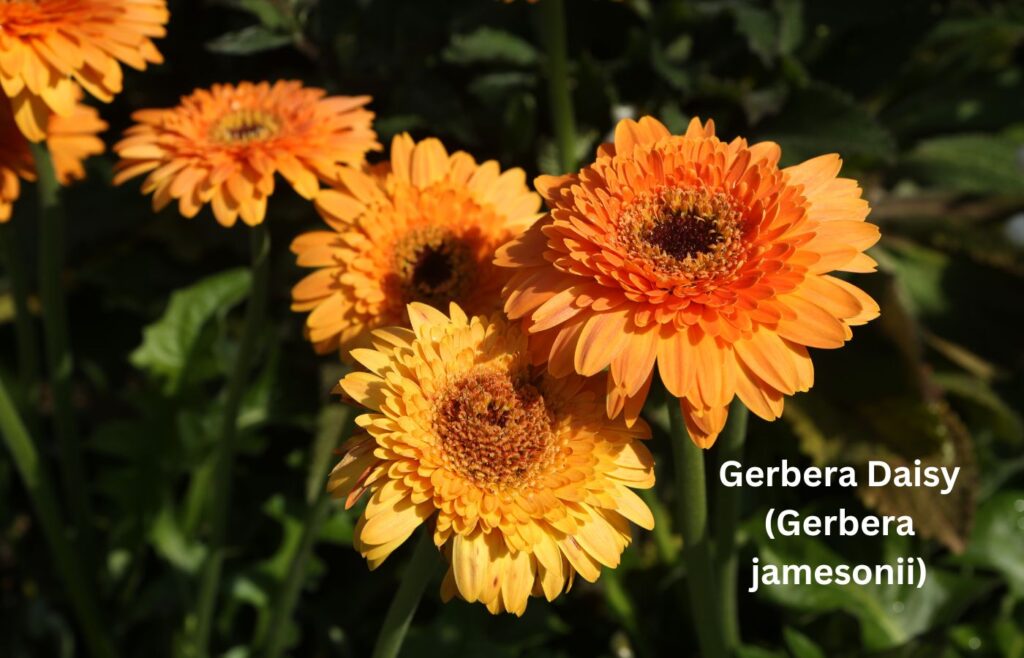
The Gerbera Daisy, also known as Gerbera jamesonii, is a bright and happy plant that comes from South Africa. It is in the Aster family. Gerbera Daisy is a popular yard plant and cut flower because it has big flowers that look like daisies and stay fresh for a long time. It also comes in many colors. These colors include yellow, white, pink, red, orange, and purple. The light and dark flower disks in the middle of many of them make for a striking contrast.
Gerbera daisies are not only nice to look at, but they can also help clean the air inside your home. These air cleaners are good for making your home healthy because they get rid of chemicals like benzene and trichloroethylene. This plant does best in a sunny spot with well-drained soil, which is similar to the temperature where it grows naturally in the subtropics.
Gerbera Daisies bring a splash of color and a touch of nature’s beauty inside. They need some care to grow well, like being watered regularly and making sure the earth is moist but not soaked, and they need to be fed every so often during the growing season. Gerbera Daisies can bloom almost all year long if you take good care of them. Their bright colors and lush leaves can cheer up any room inside.
Areca Palm (Dypsis lutescens)
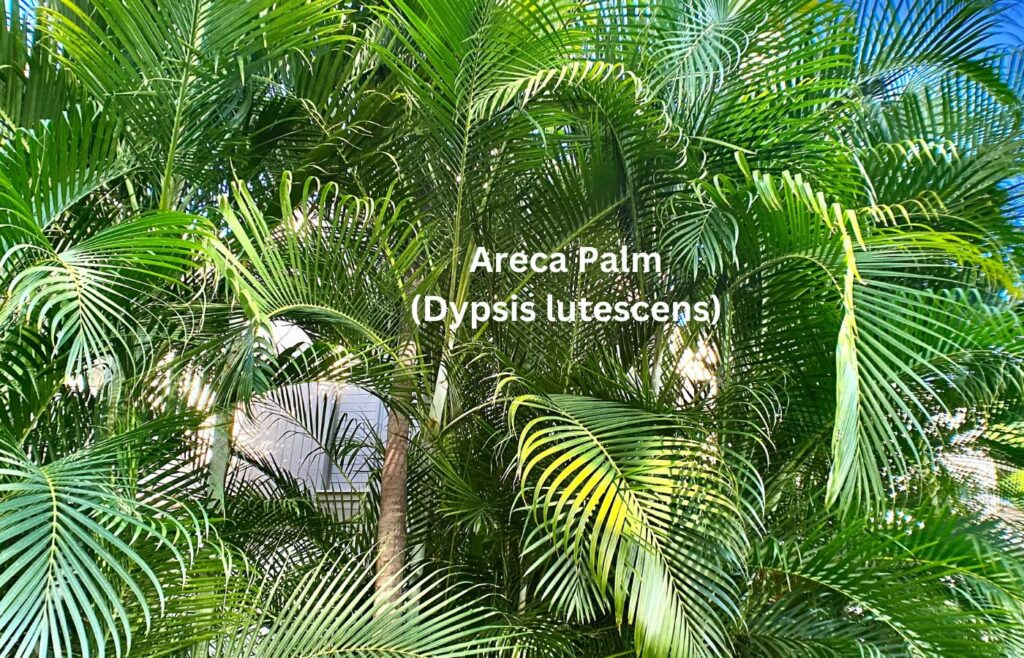
The Areca Palm, which is also called Dypsis lutescens, is a rich, tropical palm that is valued for both its looks and its good effects on the environment. This palm comes from Madagascar and is grown all over tropical and subtropical areas. It has thin, golden-yellow stems and feathery, arching leaves that can add a touch of beauty and greenery to any space.
This plant, the Areca Palm, is great for indoor spaces because it cleans the air. Common indoor toxins like formaldehyde, benzene, and carbon monoxide can be removed from the air very well with this machine. This makes it not only a nice decoration for your home or office but also good for your health because it helps clean and freshen the air.
The Areca Palm does best in bright, indirect sunlight and likes it warm and humid, just like in its original tropical habitat. It needs to be watered often so that the soil stays wet but not soaked. It also does better with higher humidity, which can be kept up by misting it often.
The Areca Palm is safe for homes with pets and kids because it is non-toxic. It also adds moisture to the air, which can help people with breathing problems or dry skin. With the soft rustling of its leaves, it can create a relaxing atmosphere that can help lower stress and improve health. This makes it a popular choice for both home and business settings.
Why Choose Indoor Plants for Clean Air?
When you bring plants inside to clean the air, it’s not just for looks; it’s a choice to make your life better. Plants take in CO2 and other dangerous chemicals and particles. They then release clean oxygen into the air, which makes it more humid. This process can help ease the signs of allergies, breathing problems, and skin issues.
Also, having plants around can improve your mental health, lower your stress, and make you more productive, so every home and business should have some.
Conclusion – Indoor Plants for Clean Air
Adding indoor plants for clean air that clean the air in your home is a natural and effective way to make it feel better. We at Homengardenideas think that green can change every part of our lives, not just our gardens. No matter how much you know about gardening or how new you are to it, these 10 indoor plants for clean air are a great place to start making your home healthy and more colorful. These natural air filters can help you breathe better and live a better life.
Remember that plants are a great way to improve air quality, but they should only be used as part of a larger plan to keep the air inside healthy. For best air quality, it’s also important to have regular ventilation and stay away from sources of indoor pollution. Bring these green beauties into your home to make it a lush, clean-air haven!
The article “Top 10 Indoor Plants for Clean Air: Enhance Your Home Environment” is written by Farhanul Haque, HomeGardenIdeas.com. Our team of passionate writers and experts shares tips and inspiration on gardening, home improvement, and design to help you create your dream space.







